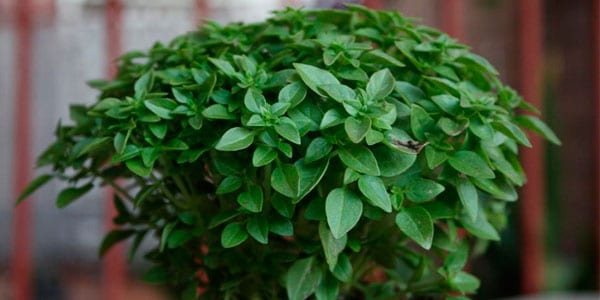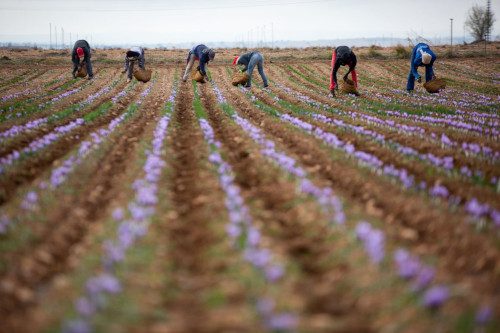Write: Tomás Franco. Author of Manual for Spices
The leaves of the Ocimum basilicum are a tasty culinary herb, known as basil or alhábega. In fresh it has a strong and warm scent, with an acrid flavor that when drying is modified, losing the acrimony and dominating a minty flavor between the lemon and pennyroyal.
There are more than one hundred and sixty varieties of basil. Many of these varieties are grown mainly for their ornamental value, as a typical pot plant. They are grown during the spring and summer months.

Nutritional composition
| Energy (kJ / 100 g) | 1396 |
| Energy (kcal / 100 g) | 330 |
| Carbohydrates (g / 100 g) | 56,6 |
| Sugars (g / 100 g) | 1,7 |
| Total fat (g / 100 g) | 4,0 |
| Saturated fat (g / 100 g) | 1,2 |
| Monounsaturated fat (g / 100 g) | 0,9 |
| Polyunsaturated fat (g / 100 g) | 1,3 |
| Proteins (g / 100 g) | 16,8 |
| MINERALS | |
| Calcium (Ca) (mg / 100 g) | 2118 |
| Copper (Cu) (mg / 100 g) | 1 |
| Phosphorus (P) (mg / 100 g) | 415 |
| Iron (Fe) (mg / 100 g) | 58 |
| Magnesium (Mg) (mg / 100 g) | 567 |
| Manganese (Mn) (mg / 100 g) | 3 |
| Potassium (K) (mg / 100 g) | 3221 |
| Selenium (Se) (mg / 100 g) | 3 |
| Sodium (Na) (mg / 100 g) | 49 |
| Zinc (Zn) (mg / 100 g) | 7 |
| VITAMINS | |
| Vit. A (retinol) (IU / 100 g) | 7373 |
| Vit. B1 (thiamine) (mg / 100 g) | 0,1 |
| Vit. B2 (riboflavin) (mg / 100 g) | 0,6 |
| Vit. B3 (niacin) (mg / 100g) | 6,2 |
| Vit. B6 (pyridoxine) (mg / 100 g) | 1,8 |
| Vit. B9 (folic acid) (μg / 100 g) | 292 |
| Vit. C (ascorbic acid) (mg / 100 g) | 41 |
| Vit. E (tocopherol) (mg / 100 g) | 9,1 |
| Vit. K (μg / 100 g) | 1715 |
The sheets of basil they have a very low energy content. Instead they are very rich in minerals, mainly calcium, copper, magnesium, potassium and zinc. And also high levels of vitamins, mainly vitamin A, pyridoxine, folic acid, tocopherol and vitamin K.
The essential oil of basil increases during the aging process, being constituted mainly by methylchavicol, cineol, camphor and linalool.

Basil in the kitchen
This is the typical plant of Italian cuisine. Its flavor generally brings a Mediterranean note to all kinds of dishes. Matches perfectly with the tomato in salads with olive oil and salt. To prepare sauces for fish and meat, and especially for Italian pasta such as the well-known "pesto".
Likewise, it is used in the elaboration of cooked sausages like some types of sausages and many fillings for meat dishes. Therefore, it should be used in moderation due to its strong aroma and when added to stews should be put at end of cooking time. It also adds a pleasant flavor to vegetable dishes, eggs, soups and mushrooms. Enhance the flavor of dishes with aubergines, potatoes, beans and rice. In addition, it goes well with garlic, rosemary, sage, parsley, onion, pepper, thyme and savory.
Pesto Genovese
Ingredients:
- 1 cup of leaves basil
- About three tablespoons of pine nuts
- Three cloves of garlic
- Three tablespoons of Parmesan cheese
- Five tablespoons of olive oil
- Sal Island
- Pepper
Preparation:
- In a mortar crush the leaves of basil, along with the pine nuts, garlic and Parmesan cheese.
- Once everything is well crushed, add the five tablespoons of olive oil, little by little mixing until it forms a dough.
- Adjust the flavor with salt and pepper.






